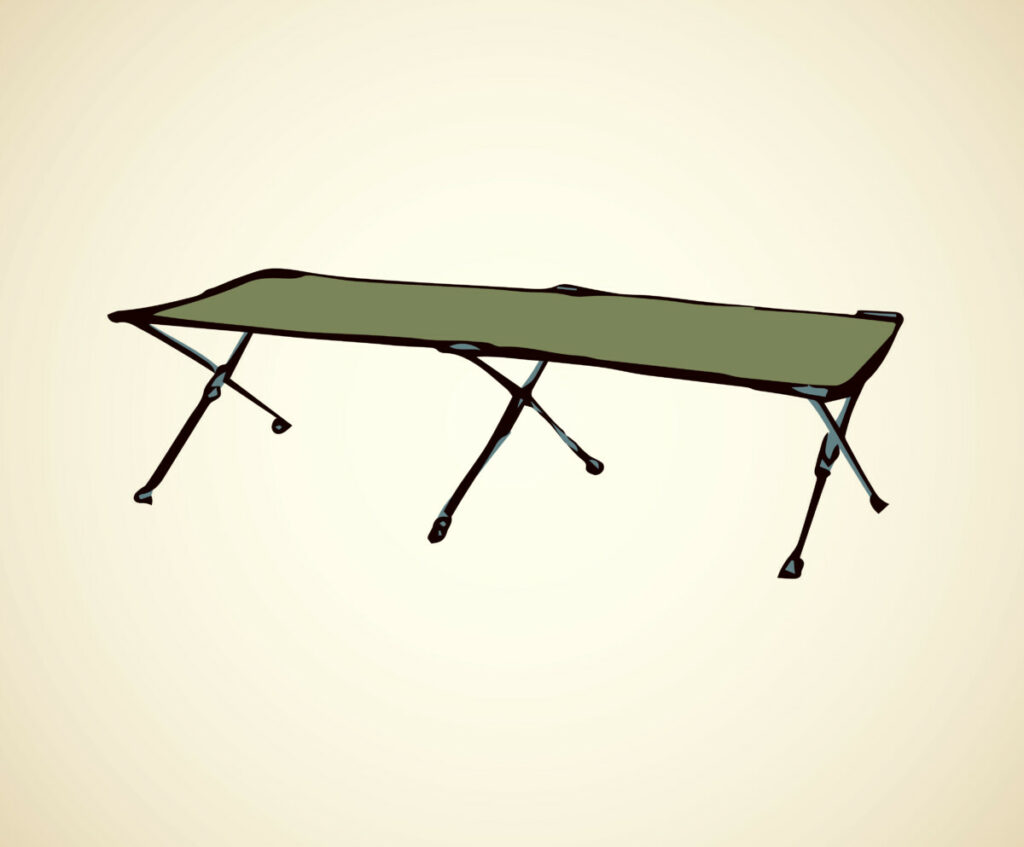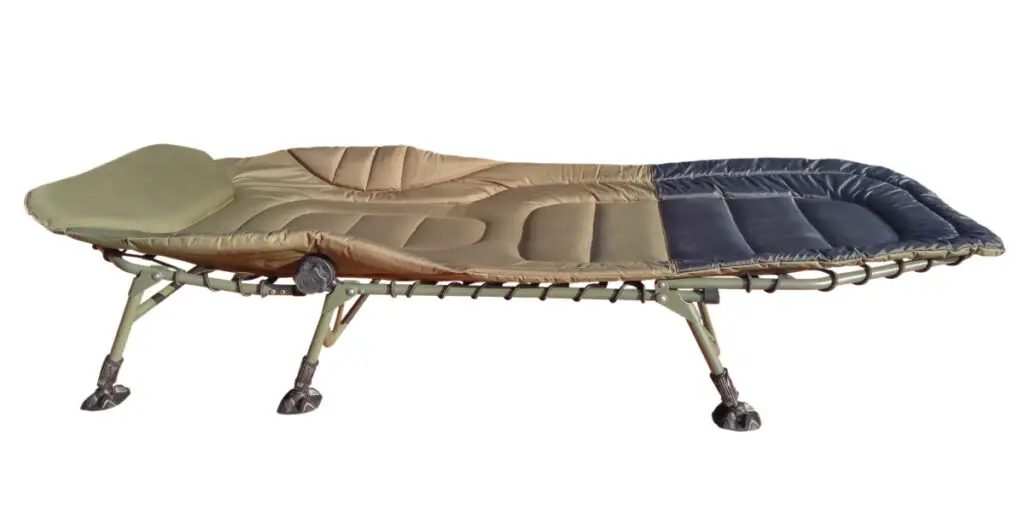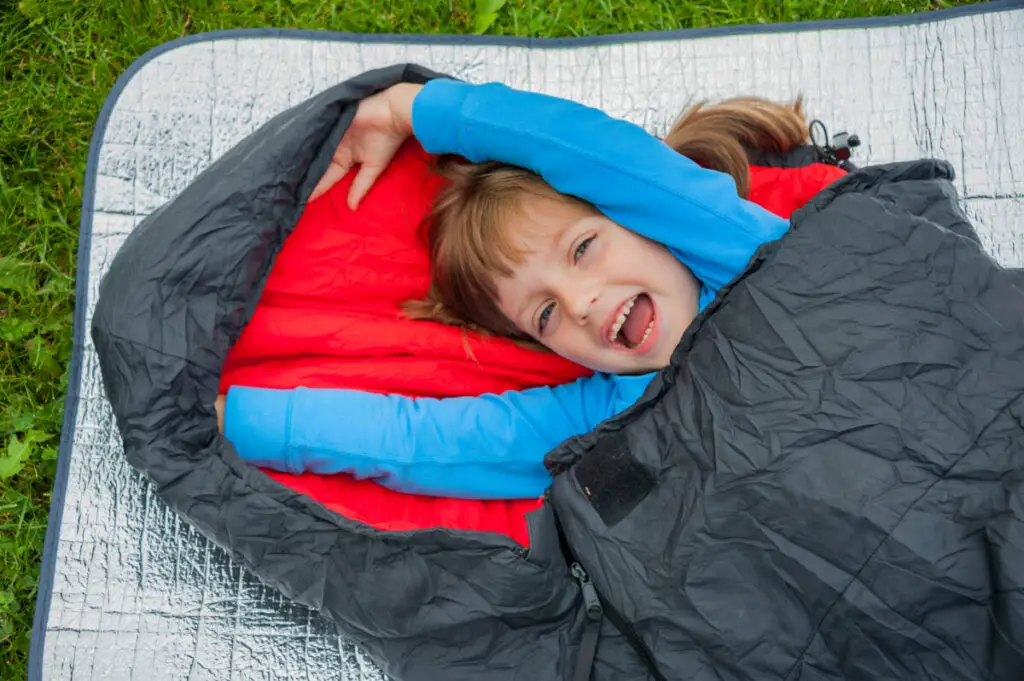
Cots are a popular camping accessory, both for the increased back support they provide to sleeping campers and their durability. Traveling with a cot can also provide the added benefit of increasing tent storage space and improving circulation during the warmer months. Are cots a good option for winter camping as well?
Cots can be a great addition to a winter camping trip, provided they are properly insulated. As cots provide additional space for airflow under your sleeping form, freely moving cold air can actually increase the amount of heat leached away from you while sleeping without the right protection.
What exactly makes winter camping different? At what point would a camper need to consider extra insulation? Let’s take a closer look at what makes cots a good sleeping option and when a person might need to make adjustments to their packing list.

Benefits of Camping Cots
Cots provide multiple benefits when camping. Unlike with air mattresses, a cot won’t deflate in the night as you sleep, instead of providing you with consistent support. Many campers also appreciate the added stability a flat surface provides their back as they sleep. With sleeping pads or even air mattresses, a comfortable surface is not always guaranteed. The elevation from the ground also gives adventurers an easier sleeping arrangement than lying on the ground, an important factor for older campers.
Cots are also much more durable than air mattresses or sleeping pads, being made of metal or durable plastic in some occasions. Depending on the make of the camping cot in question, they can also be easier to transport and assemble. Whereas air mattresses require a pump of some kind, a cot can just be assembled and disassembled without much concern for “inflation time.” However, this also means that traveling with a cot will be significantly heavier than an air mattress.
Another benefit of camping cots‘ elevation is that it provides additional storage room within your tent! Instead of tripping over gear, it can be more easily stored under the cot(s) and accessed later when needed. Some cots also come in bunk formations, allowing for more people to comfortably occupy the same space. Sleeping on a camping cot also eliminates the risk of moisture seeping into your sleeping bag from the ground.

Considerations for Winter Camping
Most people agree that “cold-weather camping” begins at around 30-40°F, though temperature tolerance is different for each individual, with some being more comfortable at lower temperatures than others. That being said, once your campsite reaches temperatures in or under this range at night, it is time to add on extra precautions against frostbite, hypothermia, and exposure.
Conduction— when the ground conducts heat away from your body— is a thing that happens all year round. It is one of the reasons we use sleeping pads and air mattresses, aside from comfort. During the winter, conduction heat loss becomes a greater issue than it would be, say, in summer when a little less heat might be welcome. An elevated, padded, or insulated sleeping area is a necessity for winter camping.
Heat lost due to convection— cold air pulling away heat— is another winter concern. It can be combatted by sleeping in an enclosed area, like a tent. Many people recommend additional precautions against convection loss, like covering as much floor space as possible to prevent cold from radiating up from the ground and hanging blankets around the inside of the tent to decrease air flow. As cots have an average of 4-12 inches of space between the ground and the sleeping surface, it is much easier for heat to be pulled away as cold air flows between your body and the ground.
For this reason, it is necessary that cots have that added insulation for camping during the winter months.

Types of Insulation to Consider
One form of insulation that can be used for a camping cot is something called an under quilt. An under quilt is a quilted apparatus used by hammocking campers, which is attached underneath the hammock (or cot, as it were). This prevents the air directly underneath the cot from flowing freely, keeping it, and you warm. Essentially, it creates a pocket of warm air so that heat isn’t lost to either convection or conduction through the cot.
A more traditional form of insulation is to use a wool blanket. Wool is an excellent insulator and has been used to keep people warm for centuries. Spread a thick blanket or two over the top of your cot before placing your sleeping bag on it to decrease the amount of heat lost to conduction.
Sleeping pads do not need to be discarded in favor of a cot, far from it! There are many types of sleeping pads that are not only intended to increase comfort for campers but which also provide additional insulation. Some of the best-insulated sleeping pads are ones made with closed-cell foam. Though these bulky and firm mats are a bit less comfortable than a squishy air mattress, they retain heat remarkably well. The “cells” or air pockets in the foam give the dense sleeping pad the ability to retain heat far longer than other pads.
Reflecting blankets or space blankets are also a good option for camping cot insulation. Designed to regulate temperatures for astronauts in space, these shiny blankets can keep you warm on your camping trip down here on earth, too. Perhaps the only issue with this form of insulation, as well as sleeping pads for that matter, is that they are known to slip about, especially against the slick fabric of sleeping bags. However, securing the blanket, pad, or other insulation with a rope or elastic quickly resolves it.
The final aspect of insulation to consider when sleeping on a camping cot in winter is actually also a storage issue. Layers on the floor of the tent can serve to trap heat and prevent the cold from leeching into the tent. In addition to covering the floor as much as you can, store any bulkier items underneath the cot itself to further limit the airflow and likelihood of drafts.

